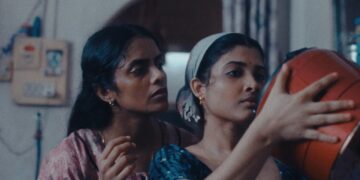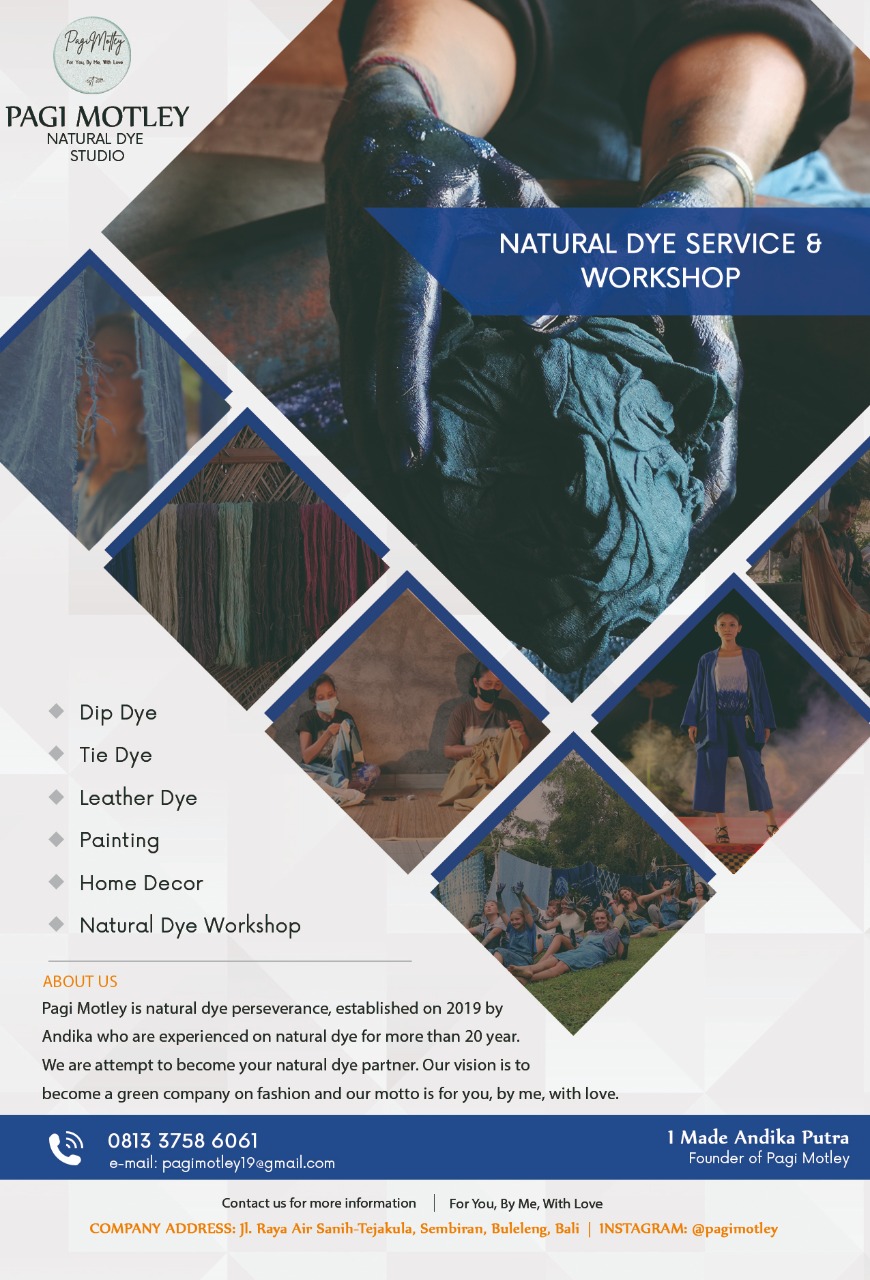THE STORY went like this. One special afternoon, May 28, 2023. There was a greeting from the first floor of my house, “Om Swastyastu.”
Suddenly, my husband called me, “Nda, ada tamu special nih.” With a deep curiosity I went down the stairs to see who was coming. Yudane and his friends and daughter had arrived! Wow. What a surprise.
Yudane is a long-time dear friend of my husband and I, he is the leading musician whose works have been famously recognized in the world of music and presented in many countries. His work is well-known for its authenticity, uniqueness, and novelty.

The book Sonic Dissonance | Picture : Sonia
His arrival in Singaraja, a town where I live, was not a coincidence. That very day he had a plan to meet some musicians and bought some musical instruments. He came with Pasca Kocok, a musician from Singaraja, and Putu Septa, a musician from Gianyar. And a girl, a beautiful one, she seemed a little silent and shy – she was Delisia, Yudane’s daughter.
Yudane introduced Delisia to my daughter Putik Padi, where they first met and soon they talked – a light conversation. Putik was naturally welcoming while Delisia was embracing her. Putik is 15 while Delisia is 12, so they have something in common to talk about.
While my husband and I, Yudane and friends talked about arts and music, Putik and Delisia talked about their own world. Putik then invited Delisia upstairs to her bedroom to continue their talk. My son, Kayu Hujan, 8 years old, also joined them. As Kayu could be friendly to everyone, he loved making new friends too.
Soon after, Yudane and his friends took leave to go to Menyali, a village where they would pick up a gamelan set. Off they went, while Delisia was still in my house, to continue story time with Putik and Kayu. Then, friendship was built in a night. After that night, Putik already asked when she would meet Delisia again. I promised her we would meet again.
A promise should be taken seriously. Then on June 24, 2023, we visited Delisia and Yudane in their home in Lodtunduh, Gianyar. A reunion happened and the kids were very happy that they finally could see each other again. Later, my husband and I attended a friend’s invitation in Central Ubud and left the children in Lodtunduh. Soon after our event was done, we were back to Lodtunduh, and talked for hours at Yudane’s home also with Yuliarsa and Marlowe, having dinner and a lot of insightful talks. It was nearly midnight when we took our leave and Yudane handed me the book, ‘Sonic Dissonance’. I felt thankful and felt that I should read it soon. I held it carefully.

Wayan Gde Yudane | Picture: Jaswanto
We drove all the way from Ubud, heading to Singaraja. I felt sleepy and needed to sleep in the middle of the journey. I stopped one time and got my car parked safely in the parking lot of a closed shop in the Kuwum area. I slept maybe around 15 minutes in the car, while the kids also slept and my husband watched us (I guess).
I finally arrived in Singaraja, at nearly 2 am. When I woke up late, I prepared breakfast for fam. And at around 11 am, I found a peaceful moment, I read the book. I soon realized, I was captivated by the book, and carried away with the stories. I realized from the beginning that the book offered me something, a novelty that I felt written with heart and love.
The writer is Robyn Yuwell, Yudane’s wife. She has done a life of research with her husband to write this beautiful book. I found that her method in doing the research is narrative inquiry. The method I used also in my present research for doctoral study. I felt connected and somehow learned that narrative inquiry is not only a study through story or the study of knowing from story, but making sense of the story and making life’s knowledge meaningful and beautiful.
As I read narrative inquiry study from Clandinin (2006), narrative inquiry is the way we search the meaning of life through stories of a person’s experience.

Wayan Gde Yudane | Picture: Jaswanto
Experience is something that has been defined clearly by John Dewey in his article Experience and Education (1938), in which he proposed the principle of continuity in experience, ‘every experience both takes up something from those which have gone before and modifies in some way the quality of those which come after’. It means there is a growth in the experience and that there is something new to offer from what the past has offered. There is always a new perspective built upon new experience.
The book Sonic Dissonance somehow gives me the sense of experience that is new to me because this is how narrative inquiry research works in reality. Sometimes I compared the research I read with this, and I said ‘this is deeper than I thought’. It cost almost a whole life of Robyn to be able to narrate Yudane’s life. That is the real idea of narrative inquiry, that it does not end at a point. It goes on and on. And it takes a whole life.
I had no idea about Yudane’s life in the past, his family background, his relation to each of his family members, his relation to the community where he was growing up, and much more. His experience is something that I feel educative and inspired by, to the extent that it moves me inside about the richness of human stories, and the complexity of the world of a person that made him a better human being.
Making sense of meaning is something the book has offered and the writer, Robyn, could elaborate her findings with such a calm and peaceful composition. She chose the first-person point of view to narrate her findings. And this makes the book reading experience an intimate and personal experience. The principle of narrative inquiry here is clear, that she narrated the subject, in the way the subject wants to be narrated.
Meaning, it is constructed through the deep conversation with the subject and is co-constructed while it was written. So the power of narrative inquiry is in its ‘taking turn’ of narratives, between the researcher and the subject being researched/the participant. The validity of the narratives is on the alignment of co-constructed meaning between the two. The researcher can always have their ideas being crossed with the ideas of the subject. This taking turns is derived from Dewey’s theory of experience and education (1938). Clandinin and Connelly (2000) pointed out that narrative inquiry is a collaboration between the researcher and the participant and that they construct meaning together, over time, in interaction and at the same pace.
There are three dimensions developed in narrative inquiry. Namely the personal and social interaction, the continuity of experience, and the situation. The way the narrative inquirer presented the data should be as authentic as possible.
In this book, Robyn put the three dimensions as smooth as silk and she presented the narrative in the way it is. With purity and clarity. There is no tendency to teach, to motivate, to inspire, but even without this tendency, the power is there. The honesty, the openness, the directness.
There is so much room for us to imagine the world of Yudane in his early life, as he grew up from a hardworking family to the life as a teenager with the freedom of youth, experiencing many events of progressive youth, and the life as adult, as parent, as art creator, as a changemaker in music and also as a growing human being.
There is also room to imagine that his art comes from his richness of emotions, that came from his life, his way of making decisions, his thoughts and his choices.
One of the touching stories was about the death of Meyan, his aunt, who raised him lovingly since he lost his mother in early childhood. Meyan helped him grow up, and taught him a lot of lessons in life. As Meyan grew old with Yudane, he took care of her. One day, they promised each other to take care of each other if one of them died before the other. If Meyan died before Yudane, Yudane would take her to the crematorium and would pay for her ceremony, but when Yudane died before Meyan, she would take Yudane to the crematorium and ask his wife to pay for the ceremony. When Meyan died, Yudane did the promise but the family did not want it that way. Meyan would be brought back to the big family and was taken care of by the big family. The emotions can be felt there, how Yudane had a promise to keep and how the family wanted it the other way. The fact was that the complexity of feeling could only be healed by deep forgiveness and deep understanding.

Wayan Gde Yudane | Picture: Jaswanto
Yudane’s works come from inspirations and understanding of the world around him. Understanding is the key in making sense of the world. According to John Dewey in his book, “The Problems of Men” (1946), understanding is different from knowledge. Knowledge is static and there is no guarantee that when people have the knowledge, the understanding will follow. Understanding is a complete form of knowledge followed by action. The knowledge is not put in isolation but put in action so it works for the people and is meaningful for society.
This book also told us about how Yudane helped young artists through the program Komponis Kini, to introduce their music to a wider audience, to help them be themselves, to inspire them to learn more seriously, and to gain more respect for their own work of art. Definitely he was inspired by his mentor Jack Body, a professor at Victoria University of Wellington where Yudane had his residency as a young artist and who gave him a lot of lessons of music and life while he was in New Zealand.
The other side of the book is the storytelling about Yudane’s family, his involvement, and his way of seeing family as the solid foundation of love and trust. His passion and love for music would not be developed well without the support from family and especially Robyn as wife. The only difference between Yudane and Robyn is maybe about organization of things, where Yudane is very organized while Robyn is not. But this small thing could be handled by their shared understanding.
As I read the book, I came to an understanding that life is rich and full of amazing people, amazing souls, amazing stories that will never come to an end, as it grows and goes and goes. [T]
Singaraja, 30 Juni 2023
References
Clandinin, D. J. (2006). Narrative inquiry: a methodology for studying lived experience. Research Studies in Music Education. http://rsm.sagepub.com/
DOI: 10.1177/1321103X060270010301
Clandinin, D. J., & Connelly, F. M. (2000). Narrative inquiry: Experience and story in qualitative research. San Francisco: Jossey-Bass.
Dewey, J. (1938). Experience and education. New York: Simon & Schuster.
Dewey, J. (1946). Problems of men. New York: Philosophical Library.
- Search : YUDANE
- Search : WAYAN GDE YUDANE





















![Kampusku Sarang Hantu [1]: Ruang Kuliah 13 yang Mencekam](https://tatkala.co/wp-content/uploads/2025/01/chusmeru.-cover-cerita-misteri-120x86.jpg)










